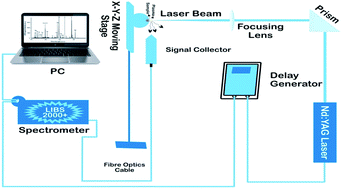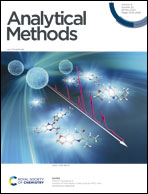Detection of nutritional and toxic elements in Pakistani pepper powders using laser induced breakdown spectroscopy
Abstract
In the current study, we applied laser induced breakdown spectroscopy (LIBS) to determine the elemental distribution of nutritional and trace heavy metals in pepper powders available in Pakistan using the standard calibration curve of laser induced breakdown spectroscopic (CC-LIBS) technique. The samples were found to contain elements such as K, Ca, Mg, Na, Fe, Zn, Al, Pb, Cu, and Cr. In addition, we also identified the atmospheric H-alpha line of hydrogen in the spectra, which was used to estimate the electron number density. To achieve a highly sensitive LIBS system to determine the trace amounts of nutritional and toxic metals in the pepper powders and to achieve the best limit of detection, the LIBS system was optimized by studying the dependency of the LIBS signal intensity on laser irradiance, variation in spacing between the focusing lens and target, as well as on the gate width. To justify the results of the LIBS study, we also determined the concentration of similar (duplicate) peppers by digesting the samples in appropriate solvents using a standard method such as inductively coupled plasma-optical emission spectrometry (ICP-OES). The minimum detection limit was obtained for trace heavy metals from the calibration curves. The results of LIBS displayed noteworthy conformity with those acquired from the ICP-OES analysis. The results of both the techniques clearly revealed that K was the most abundant element in all the peppers, followed by Ca, Mg, Na, Fe, Al, Pb, Zn, Cu, and Cr. The relative accuracy of our LIBS system for different species as compared with the ICP technique was in the range of 0.08–0.3 at 2.5% error confidence. Conclusively, the present work demonstrated the suitability of the LIBS technique due to its rapid, non-destructive, and eco-friendly approach for food security.



 Please wait while we load your content...
Please wait while we load your content...